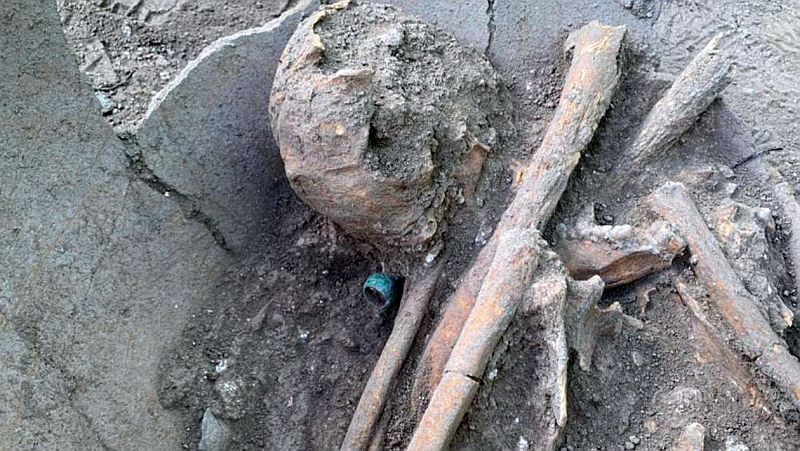
Campeche, Mexico – The Mayan Train project has yielded another exciting archaeological find on the Yucatán Peninsula, revealing ancient human remains buried for about 1,200 years.
The National Institute of Anthropology and History (INAH) shared this remarkable discovery recently. What makes this find special is that the bones of a young person were inside a large burial container, which also contained a beautiful jade ring, according to INAH.
This discovery is from the Late Mesoamerican Classic period (600-800 AD) and happened at the El Tigre archaeological site in Campeche. El Tigre was important long ago for trade and ceremonies. Some think it might be where Hernán Cortés executed the last Aztec emperor, Cuauhtémoc, , during his 1525 expedition to Honduras.
Diego Prieto Hernández, who leads INAH, revealed during President López Obrador’s Monday morning press conference, that “a green stone ring, a jade ring, was placed as an offering. This find is a significant piece that shows how important this person was.”
The Tren Maya project goes through Campeche with two routes – one from Mérida, Yucatán, and another from Bacalar, Quintana Roo. These routes meet in Escárcega, Campeche, and continue to Palenque, Chiapas.
Archaeological work is happening along the Tren Maya route with support from the Archaeological Zones Improvement Program (Promeza). They are digging in three places – Moral-Reforma in Tabasco, and Palenque and El Tigre.
This recent discovery brings the count to 177 pre-Columbian human burials found along Tramo 1 of the Mayan Train route. These findings were uncovered as they built the tracks.
From Escárcega to Palenque, as of August 14, they’ve found 2,698 structures, 248 pieces of furniture, 281,353 ceramic fragments, and 55 natural objects tied to ancient human activities.
They are working on making El Tigre a tourist attraction. This involves preserving the main plaza, market area, and a complex structure, and building a visitor center. As the Tren Maya project forges ahead, it continues to unveil the rich historical tapestry of Mexico’s ancient past.
With information from inah.gob.mx.




